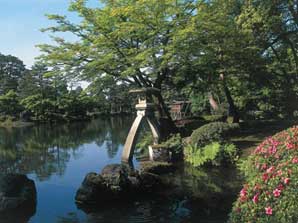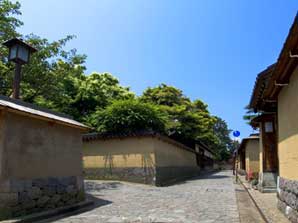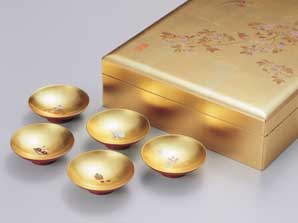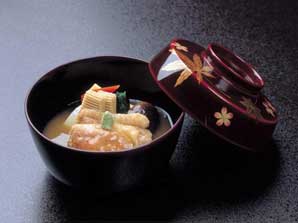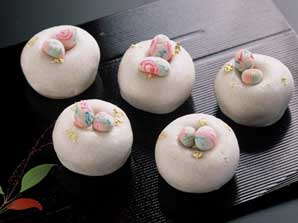Web Japan > Trends in Japan > Food & Travel > The Timeless Elegance of Kanazawa
The Timeless Elegance of Kanazawa
City of Culture Offers a Journey Back in Time
Located on the Sea of Japan in the middle of Japan's main island of Honshu, the city of Kanazawa flourished as a castle town from the late sixteenth to the late nineteenth century. The arts and culture that developed over these three centuries, as well as many of the old buildings and districts built during this period, continue to color the life of the city today. Kanazawa is also known for its savory local dishes made from an array of ingredients - the bounty of the sea and mountains. Vestiges of the Edo period (1603-1868) culture of samurai and commoners can be found all around town even today.
Steeped in HistoryKanazawa has been spared the devastation of earthquakes and war, and for this reason many old buildings still stand and the city retains much of the charm of its past.
The ruins of Kanazawa Castle, which served as the residence of the powerful Maeda family in the Edo period, are located in the center of the city. Kenroku Garden, considered to be one of Japan’s three most splendid landscaped gardens, is adjacent to the castle. Its extensive grounds include ponds and miniature mountains, and as they stroll around the visitors can stop at one of the many tea houses and villas (former residences of the nobility) that dot the grounds and enjoy the lush greenery and beautiful vistas.
A short walk from Kanazawa Castle is the Nagamachi district of former samurai residences, which once housed vassals of the former Kaga domain, encompassing the city and the surrounding region. Today, a number of these residences remain, and a walk along the narrow cobblestone paths lined with earthen walls offers visitors a trip back in time.
A City of Culture The lords of the Maeda family were great patrons of the tea ceremony and Noh drama, and an appreciation of these arts spread among the commoners of the area. Today a large number of tea ceremonies and Noh performances are held around the city. The Kaga region was known as a place where traditional handicrafts were upheld and fostered, and to this day these traditions continue to be handed down from generation to generation in Kanazawa.
Kanazawa gold leaf, beaten to a thickness of just one ten-thousandth of a millimeter by skilled craftspeople, is a stunning artistic achievement. The gold leaf is used as a decoration for traditional buildings, crafts, and art works, as well as tableware and other household objects.
Kanazawa lacquerware, Kutani porcelain (considered one of the country’s finest porcelain styles), and Kaga Yuzen silk (made with a special dyeing method and characteristic design motifs), continue to be produced by craftspeople trained in traditional techniques. In Kanazawa, unique designs that bring together the grandeur of samurai culture and a delicate artistic sensibility find expression in objects for everyday use.
Bounty from Land and SeaBordered by the Sea of Japan on one side and mountains on the other and blessed with a plentiful supply of water, Kanazawa boasts an abundance of fresh, tasty ingredients. The local dishes of Kanazawa use a range of traditional Kaga vegetables and fish caught in the Sea of Japan. When served on elegantly artistic dishes, they provide a feast for the eyes as well as the palate.
Among the most famous local dishes is jibuni stew. Flour-coated duck and chicken meat is simmered with vegetables and sudarefu (wheat gluten rolled into thin, lined strips in a bamboo rolling mat and then boiled) in a sweet and salty broth and served with a spicy wasabi garnish. The thickened soup and wasabi aroma make a mouthwateringly good combination.
Kanazawa is also known for its traditional Japanese confectioneries, whose development was shaped by the tea ceremony, and its sake and soy sauce makers, which thrive on the high quality local water. (February 2010)
- Nikko, City of History and Nature (March 2009)
- Tourist-Friendly Hida Takayama (December 2008)

